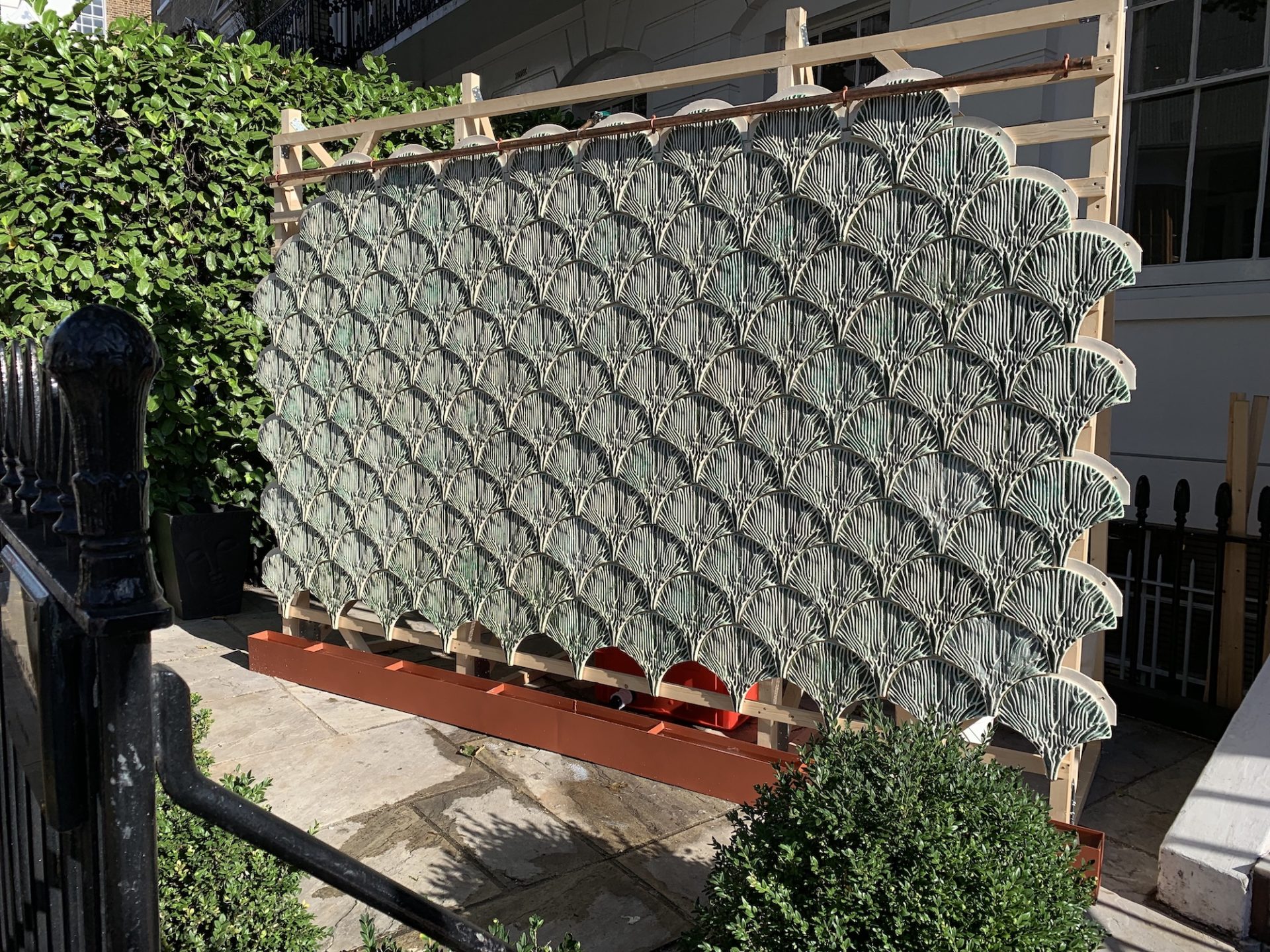As an independent researcher, who has recently submitted her PhD at The Bartlett School of Architecture, UCL, the Material Innovation Award by the Clothworkers Association has been a critical driver in creating a research foundation, one that aims to last for years to come.
The initial stages of the fellowship focused on material investigations. Here, a water-based biomaterial developed for the growth of microalgal cells were explored. The projects application centered around bioremediation; for example, treating heavy metal contaminated water from a living biomaterial. Remote, artisanal cottage industries within the UK, Europe and developing countries such as India that create large amounts of polluted water, but are unable to deploy high-tech, extremely expensive engineering solutions – offered an appropriate context for the project. Therefore, the material experiments were specific to establishing the biomaterials behaviour when exposed to the unpredictable climatic conditions (outside the lab environment). Initial set of experiments illustrated the varying properties of the biomaterial, as it would perform differently within different contexts – a result of the materials’ living property as it adapts, and responds in real time to the inputs it receives from its immediate environment in terms of sunlight, pH, rain, wind, nutrients, and harmful / polluted particulate matter both in air and in water.
We then narrowed our research to a more concentrated context, in order to start regulating the biomaterial properties to achieve the desired results. These experiments are of course in their initial stages, and are currently on-going. However, special attention was given to design – and how we could use design to help the material perform its desired functions. That is, can we generate geometries that will support and sustain the algae-laden materials performance, as water flows over it and the immobilised microalgal cells absorb the heavy metals present in the wastewater.
This was achieved by creating a second design iteration of the Indus wall system – a wall assembled from ceramic tiles embedded with vein-like channels designed to hold the algae-containing biomaterial. Therefore, the second design iteration kept in mind the altering properties of the biomaterial, while also optimising water-flow to achieve a higher level of microalgal bioremediation. These tiles have been exhibited at exhibitions such as the Design Museum, London, 2020.
Moving forward, we have identified a potential contaminated site in the UK & in India, in order to build and test a small scale prototype of the Indus wall. We have chosen two different countries, and two different contexts primarily to demonstrate the adaptability of a bio-active system both in developed and developing countries. Further, we feel that both the experiments will unveil very different performance properties of the wall system, allowing us to gather more data – for the next iteration. At present, the small scale prototypes are being developed, and we are aiming to do a full-sale working prototype in an existing contaminated site by Autumn 2022.
With the Arts Foundation support, I have managed to successfully pursue the vision of being able to further evolve the development and the implementation of novel living biomaterials for applications in our cities. Projects such as Indus, if successful will spearhead an era where we ‘design for behavior change’. Where we are able to design, fabricate and maintain biologically living technological systems that work in harmony with our natural environment, transitioning what it really means to establish a new human-nature relationship. Designing large-scale components and systems from novel biomaterials is one of the key ways of tackling climate change, that is not immediate but has its lasting effects on generations to come.
With this idea, I have recently delivered my second Tedx talk titled ‘designing for Living Materials’ for the upcoming TedxGateway Countdown series to be showcased on the 31st of October, 2021.
Additionally, a series of workshops were designed to be conducted with local artisans who could potentially use such a novel bio-system. Due to the pandemic, this was of course postponed, but we are hoping to do our first workshop in February 2022.
